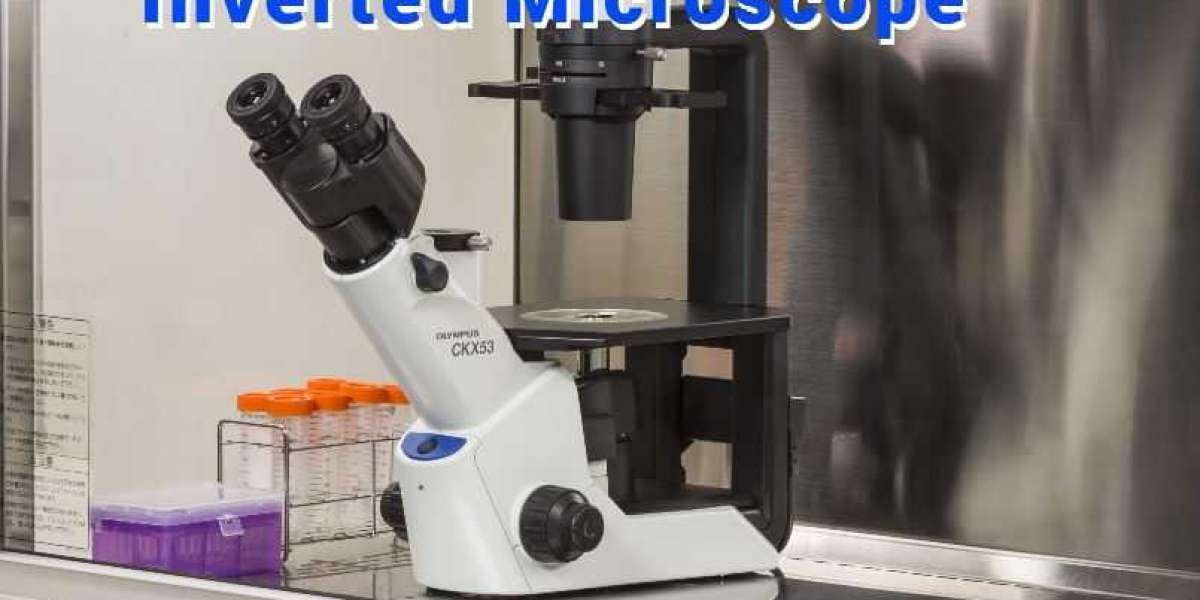Researchers are able to capture and analyze the samples they observe in greater detail with the help of inverted microscopes, which offer a variety of imaging capabilities. Additional information regarding the imaging capabilities of Inverted Microscope can be found as follows:

Numerous contemporary inverted microscopes come pre-fitted with their own built-in cameras as standard equipment.
These cameras were developed to capture high-resolution images of the specimens by looking directly through the optics of the microscopes. Built-in cameras provide researchers with a level of convenience and ease of use that is unmatched by external camera attachments, enabling them to quickly document their observations without resorting to the use of a third-party camera.
Systems for Digital Photography:
Inverted microscopes typically come equipped with their own cameras as well as the ability to connect to external digital imaging systems. These systems incorporate high-quality cameras, software for capturing images, and interfaces for connecting to computers. The imaging process can be more easily customized and precisely managed with the help of digital imaging systems. They make it possible for researchers to alter imaging parameters such as exposure time and gain, and they make it possible for them to capture images with higher resolution, dynamic range, and sensitivity.
Software for Image Acquisition and Analysis
Most inverted microscopes come standard with dedicated software for image acquisition and analysis, which serves as a complement to the imaging capabilities of the microscope.
The researchers are able to organize, process, and analyze the captured images with the help of this software. They are able to improve image quality by carrying out activities such as image stitching, stacking, and deconvolution, and they can also extract meaningful data. In addition, the software might include tools for quantitative measurements such as distance, area, intensity, and analysis of colocalization.
Time-Lapse Imaging: The capability of Inverted Microscope to perform time-lapse imaging is extremely helpful, particularly for research involving live-cell imaging.
Researchers are able to take a series of images at predetermined time intervals, which enables the observation of dynamic processes and the behavior of cells over time. The use of time-lapse imaging is indispensable for research into time-dependent processes such as cell division, migration, and growth. It offers understanding of the temporal dynamics as well as the interactions that occur within biological systems.
Advanced Imaging Techniques: If you want to expand the capabilities of your inverted microscope, you can have it customized and outfitted with a variety of different advanced imaging techniques.
The following are some methods that are commonly used
The microscopy technique known as phase contrast makes transparent samples more visible by converting phase differences in the light that passes through the specimen into contrasted images. Fluorescence Microscopy: An inverted microscope can be fitted with fluorescence modules so that fluorescently labeled samples can be viewed and researched. Using this method, it is possible to identify and pinpoint the location of particular molecules, cellular structures, and processes that are present within the sample.
Confocal Microscopy
Confocal microscopy allows for optical sectioning as well as improved resolution by selectively illuminating and detecting a narrow plane within a sample. This allows for the technique to provide both of these benefits. It makes it possible to image in three dimensions and gets rid of light that is out of focus, which ultimately leads to images that are clearer and have more detail.



